Ever since the organization VIDA released statistics in early February showing a stark gender imbalance in the world of literary reviews, there has been a sustained conversation online about what the numbers mean and how they might be changed. Writers and editors who have chimed in include Meghan O’Rourke, Katha Pollitt, and Ruth Franklin, among many others. At Bookslut, Jessa Crispin and Michael Schaub had an extended dialogue about the issue, and Drew Johnson, as many have, wondered about his role as a reader. The subtitle of Pollitt’s piece was: “If you really want more women writers, get more women editors.” I happen to know a former reviews editor at one of the magazines targeted in the VIDA study, and she got in touch to add her voice to the discussion. Jennifer Szalai edited the book reviews section of Harper’s from 2003 to 2010. Jen and I have been close friends since we served as Harper’s interns together in the fall of 2000. Our correspondence took place over e-mail:
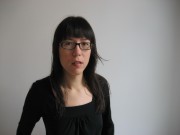 Let’s get your background down first. How long were you the book reviews editor at Harper’s? And during that time, what was the general nature of the job (without addressing the gender balance in these questions yet) – how many people did you solicit vs. how many people pitched you? How much of what you assigned for review was nonfiction vs. fiction?
Let’s get your background down first. How long were you the book reviews editor at Harper’s? And during that time, what was the general nature of the job (without addressing the gender balance in these questions yet) – how many people did you solicit vs. how many people pitched you? How much of what you assigned for review was nonfiction vs. fiction?
I edited the Reviews section at Harper’s for about seven years. The reviews we ran were a mix of pieces that started out as unsolicited pitches from writers and pieces by writers I solicited, some of whom were already in the Harper’s stable and others whom I sought out on my own. I would get pitched a lot, and from the considerable number of very brief, two-sentence pitches I received (“Would you like a review of X? I’d like to write about it.”), I had the feeling that many writers who had never written for the magazine felt that a review was somehow easier to write (and assign!) than the essays that ran elsewhere in the magazine. And I would have to tell these writers that our reviews, because of their length (3,500-4,000 words), had to be thought of as essays, which meant that the writer had to come up with an angle or an approach that would give me a sense of their argument, what they thought might be at stake. (Even among the writers I solicited, I would usually ask them to specify an angle or certain questions that they intended to explore before we’d agree on the assignment.)
This meant that assigning reviews of fiction was always harder than assigning reviews of nonfiction. With a nonfiction book, one has a pretty good sense of what the book is about, and often it’s mostly a matter of finding a critic who happens to have an expertise (or an intense interest) in the subject, as well as an original approach. With a work of fiction, whose ostensible “subject” makes up only part of the reading experience, I usually wanted to read an essay that revealed what happened when a particular critic encountered a particular book. This requires a lot of trust in the writer, simply because I could never be sure what I was going to get.
Jonathan Chait of The New Republic wrote: “Confidence in one’s opinions and a willingness to engage in intellectual combat are disproportionately (though not, of course, exclusively) male traits.” Katha Pollitt, after considering notions similar to the one expressed by Chait, wrote at Slate: “There is probably a bit of truth in all these points: Women do often doubt their knowledge and abilities, and their diffidence probably explains why the pool of writers sending in pitches and proposals and unsolicited manuscripts is, at most magazines, disproportionately male.” What percentage of pitches you received, roughly, were from men? And were there any general tonal differences in their approaches from the approaches of prospective women writers?
A vast majority of the pitches I received were from men. In fact, during seven years in that position, I could probably count on two hands the number of women who pitched me — I’d guess that the ratio was something like nine or 10 to one. I also noticed that if I turned down a pitch from a man, he would likely send me another pitch the following week. Whereas women rarely pitched me again after getting a rejection.
Tonally, no, I didn’t notice much of a difference between the men and women. This is not to discount Chait’s point, since the women who did send pitches might be a self-selected group — a distressingly small self-selected group — but all the prospective writers would sound pretty confident in their opinions.
The statistics approach the issue from two angles: reviews written by gender, and the books being reviewed by gender. How separate or entangled are those issues to you? What do you consider unique elements of each?
I suspect the issues are connected in some way, though I’m not sure whether it’s as straightforward as claiming that the dearth of reviewed books by women derives directly from the dearth of reviews written by women. In fact, Ruth Franklin at The New Republic concluded that “the magazines are reviewing female authors in something close to the proportion of books by women published each year.” She then wonders whether the numbers have anything to do with how “we define ‘best’ and ‘most important’ in a field as subjective as literature, which, after all, is deeply of influenced by the cultural norms in any given age.” She raises the possibility that the dismal proportion of books published by women has to do with unconscious biases, but then she doesn’t go so far to provide a confirmation one way or the other — an approach that, to my mind, is less evasive than it is honest. With a work as complicated as a book, whose creation and reception is dependent on so many factors, I’d find it hard to believe anyone who claimed they could pinpoint exactly why so few women were published. We should also keep in mind that Ruth’s sample excluded those “books that were unlikely to be reviewed — self-help, cooking, art” — which also happen to be books that are often written by women.
This connects to the question of which books are considered “important” enough to review. I do think there are a whole host of cultural norms that come into play — among them the bizarre obsession with “the Great American Novel,” as well as a condescension toward certain subjects like motherhood and a young woman’s coming of age — but then it’s hard to see how this contributes to the gender imbalance among reviewers (though I can see how it might very well derive from it).
I also wonder whether the economics of reviewing has anything to do with the VIDA numbers. Women often take on the responsibility of childcare in a family, especially if they’re the freelancer with what’s assumed to be the more flexible schedule, and a review requires a lot of time to oneself, for payment that would barely pay the sitter, if that. I recall one particular writer I wanted to have contribute to Harper’s who took almost a year before she finally agreed to an assignment, because she had young children to care for at home. Merely anecdotal, I know, but when I was reading all of these posts about the VIDA study, I was surprised that none of those I read even brought up the economics of it.
Did you ever feel the other editors at the magazine wouldn’t be amenable to increasing the number of female contributors? Or were otherwise comfortable with the balance of writers skewing heavily male?
The editors at Harper’s always wanted to have more female contributors. But as an editor, you’re juggling so many considerations at once that the gender of a writer will be one concern among many. Besides which, when assigning longer pieces and paying a relatively decent rate in this publishing climate, as many of the magazines cited in the VIDA study do, it’s harder to take chances on a writer starting out, because you’ll want to see clips — and if more men than women are getting published, then the pool of experienced writers will skew male. It’s a vicious circle. I thought the numbers might be better for women at smaller literary magazines, which are well-positioned to take chances on unpublished writers, especially because little (or no) money is at stake. And the numbers are better, though — with the sole exception of the poets being reviewed by Poetry — they still skew male.
One commenter on a VIDA post wrote: “Also, could it be that more men than women read these magazines?” I saw one page online that suggested Harper’s subscribers run 62%-38% male. The same site said the New York Review of Books was 71-29, male. Do those Harper’s numbers sound right to you? And does this — or should this — have anything to do with the final analysis of the VIDA statistics? If a magazine whose readership was 65-35 female had that percentage of female writers, would it be a story?
The Harper’s numbers sound plausible to me, though I can’t vouch for their accuracy. You bring up a good point about whether this would be an issue if a magazine with a 65% female readership published two female writers for every one male, and you see that all the time — in women’s fashion magazines, for instance. You also see the numbers skewed toward male writers in men’s fashion magazines, and the VIDA study doesn’t have anything to say about those. But it makes sense that VIDA would focus on the higher-profile literary magazines, because those magazines are where the cultural conversation takes place. Of course, this then gets into the question of why fashion is not considered as exalted as the other arts, but not having ever worked in fashion, I’m not sure I’m the person to go down that rabbit hole.
Is there a solution to this problem? Do you consider it a problem? Is 50-50 a worthwhile — or procedurally realistic — goal?
I go back to Ruth Franklin’s TNR post, in which she wonders whether the numbers have anything to do with how our cultural norms define what kind of literature is deemed important (not to mention which issues are deemed important), because I see the problem — and I do see it as a problem — starting there. I don’t believe the solution is as simple as having more female editors (which is what Katha Pollitt suggests) or having an affirmative-action-style approach to assigning pieces (another one of Pollitt’s suggestions). I’d like to put forth a solution, but I’ll admit that I’m still at the question stage, trying to get my mind around the bigger forces at work. I was also given a lot of encouragement and mentorship during my education and career, mostly from men, since most of my professors and most of the people senior to me were men. So I can’t say that I’ve felt shut out.
All that said, I recognize that my experience isn’t borne out in the VIDA numbers. Also, I think the real challenges for women come not so much when they’re starting out and they’re in similar life situations (20s, single) with similar backgrounds (good schools, good grades) to their male peers; after all, girls today are often brought up with extraordinarily high expectations from their parents, and many of those girls are considered just as successful as the boys (if not more so) while they’re in school. When they start actually living in the world, though, and they’re no longer in such an insular environment, they might be surprised to see some palpable tendencies in the culture at large to condescend toward women’s creative work — the chicks might be “hard-working” and “very smart,” but, with certain exceptions, it’s the dudes who are the real geniuses. And when these women find themselves having interests and experiences that are specific to women, they might be surprised to see how such interests and experiences are devalued, and must struggle to get accorded some serious respect. I don’t want to get into the whole “Franzenfreude” mess, because I don’t believe that Jodi Picoult and Jennifer Weiner are trying to write the kind of literary fiction in which every sentence is considered and worried over, but I do think it’s important for both women and men to be aware of these larger questions, to render them explicit, without the denunciations and defensiveness that characterize too many of our conversations about gender.
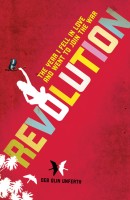 Madison Smartt Bell reviews Deb Olin Unferth’s memoir about dropping out of college in 1987 and chasing revolution in Central America: “At the heart of Revolution is Unferth’s slightly eccentric take on the venerable confusion of the political and the personal. Deb’s wires keep getting crossed between two expectations: revolution will be permanent, leading to utopia, and love will be permanent, leading to paradise.” . . . Julian Barnes on Joan Didion, Joyce Carol Oates, and whether grief is a state or a process. . . . Michael Levenson reviews Deborah Lutz’s Pleasure Bound: Victorian Sex Rebels and the New Eroticism: “Signs abound that the author has been moved by the scenes of Victorian desire, by the way a culture of respectability was also a universe of pleasure, a theater of tease and compulsion. But somewhere along the line a decision was made to frame the erotic transgression for a trade readership. That’s where the book lost the lure of desire and acquired the reek of a publishing opportunity.” . . . Rachel Hurn relates to a collection of pieces by the very funny Mike Sacks: “Despite the fact that half of the characters in these pieces are irrational schmucks who do things like write rejection letters to Anne Frank, or who put together a list of warnings regarding their brothers’ upcoming bachelor party, or who send fan mail to Salman Rushdie, when you get past the ‘fictional fantasies,’ the people in these essays remind me much of myself.” . . . A new book about clouds aims to be a field guide like those used by bird-watchers, and looks to be, at the very least, beautifully illustrated. . . . Jake Whitney reviews a new book about the financial crisis: “The Monster is among a wave of books and films that attempt to shed light on the subprime crisis and the 2008 crash, but it is remarkably comprehensive on its own — a sweeping, detailed, and forceful account of the events, the people, and the policies that led to our current economic woes.” . . . David Oshinsky reviews two baseball books: Jimmy Breslin’s brief new book about legendary Brooklyn Dodgers owner Branch Rickey and a “faithful if overstuffed” biography of the great Dodgers catcher Roy Campanella.
Madison Smartt Bell reviews Deb Olin Unferth’s memoir about dropping out of college in 1987 and chasing revolution in Central America: “At the heart of Revolution is Unferth’s slightly eccentric take on the venerable confusion of the political and the personal. Deb’s wires keep getting crossed between two expectations: revolution will be permanent, leading to utopia, and love will be permanent, leading to paradise.” . . . Julian Barnes on Joan Didion, Joyce Carol Oates, and whether grief is a state or a process. . . . Michael Levenson reviews Deborah Lutz’s Pleasure Bound: Victorian Sex Rebels and the New Eroticism: “Signs abound that the author has been moved by the scenes of Victorian desire, by the way a culture of respectability was also a universe of pleasure, a theater of tease and compulsion. But somewhere along the line a decision was made to frame the erotic transgression for a trade readership. That’s where the book lost the lure of desire and acquired the reek of a publishing opportunity.” . . . Rachel Hurn relates to a collection of pieces by the very funny Mike Sacks: “Despite the fact that half of the characters in these pieces are irrational schmucks who do things like write rejection letters to Anne Frank, or who put together a list of warnings regarding their brothers’ upcoming bachelor party, or who send fan mail to Salman Rushdie, when you get past the ‘fictional fantasies,’ the people in these essays remind me much of myself.” . . . A new book about clouds aims to be a field guide like those used by bird-watchers, and looks to be, at the very least, beautifully illustrated. . . . Jake Whitney reviews a new book about the financial crisis: “The Monster is among a wave of books and films that attempt to shed light on the subprime crisis and the 2008 crash, but it is remarkably comprehensive on its own — a sweeping, detailed, and forceful account of the events, the people, and the policies that led to our current economic woes.” . . . David Oshinsky reviews two baseball books: Jimmy Breslin’s brief new book about legendary Brooklyn Dodgers owner Branch Rickey and a “faithful if overstuffed” biography of the great Dodgers catcher Roy Campanella.
 I’m thrilled to be a judge in this year’s Tournament of Books, an annual treat for readers. The quarterfinal round I judged pitted James Hynes’ Next, a novel I had been meaning to read, against Anne Carson’s Nox, a highly stylized, fragmentary account of her relationship with her brother, who died suddenly in 2000. Here’s a piece of
I’m thrilled to be a judge in this year’s Tournament of Books, an annual treat for readers. The quarterfinal round I judged pitted James Hynes’ Next, a novel I had been meaning to read, against Anne Carson’s Nox, a highly stylized, fragmentary account of her relationship with her brother, who died suddenly in 2000. Here’s a piece of  Sammy Hagar’s got a memoir out and, um, like many chronicles of rock n’ roll, it seems to come with an inherent warning about
Sammy Hagar’s got a memoir out and, um, like many chronicles of rock n’ roll, it seems to come with an inherent warning about 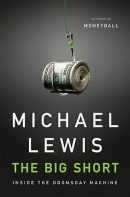 I feel like the blog is finally getting its 2011 legs. Or I hope so. This is supposed to be the biggest year in the site’s two-year history. (That’s what I read in Bloomberg Businessweek, anyway.) Time to pick up the pace.
I feel like the blog is finally getting its 2011 legs. Or I hope so. This is supposed to be the biggest year in the site’s two-year history. (That’s what I read in Bloomberg Businessweek, anyway.) Time to pick up the pace.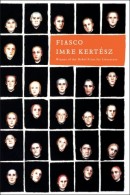 I recently received a copy of Imre Kertesz’s novel
I recently received a copy of Imre Kertesz’s novel 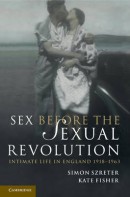 Simon Callow
Simon Callow  Let’s get your background down first. How long were you the book reviews editor at Harper’s? And during that time, what was the general nature of the job (without addressing the gender balance in these questions yet) – how many people did you solicit vs. how many people pitched you? How much of what you assigned for review was nonfiction vs. fiction?
Let’s get your background down first. How long were you the book reviews editor at Harper’s? And during that time, what was the general nature of the job (without addressing the gender balance in these questions yet) – how many people did you solicit vs. how many people pitched you? How much of what you assigned for review was nonfiction vs. fiction?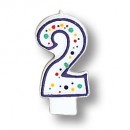 The Second Pass turns two years old today. I want to thank everyone — as always — for visiting, reading, passing pieces along to friends, commenting, following the site
The Second Pass turns two years old today. I want to thank everyone — as always — for visiting, reading, passing pieces along to friends, commenting, following the site 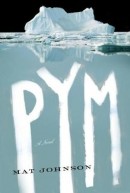 Adam Mansbach
Adam Mansbach 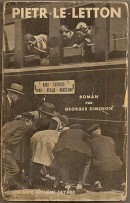 Luc Sante (on John Gall’s blog)
Luc Sante (on John Gall’s blog) 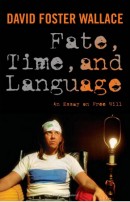 Even readers who appreciated the brainiest subtleties of David Foster Wallace’s work might find his college thesis about the philosophy of fatalism rough sledding. Here’s a brief excerpt:
Even readers who appreciated the brainiest subtleties of David Foster Wallace’s work might find his college thesis about the philosophy of fatalism rough sledding. Here’s a brief excerpt: